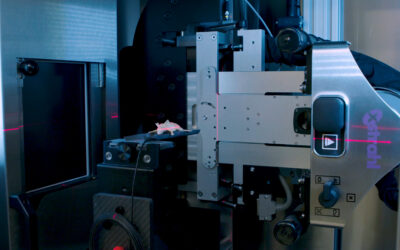Low-dose hyper-radiosensitivity (HRS) is the phenomenon whereby cells exposed to radiation doses of less than ∼0.5 Gy exhibit increased cell killing relative to that predicted from back-extrapolating high-dose survival data using a linear-quadratic model. While the exact mechanism remains to be elucidated, the involvement of several molecular repair pathways has been documented. These processes in turn are also associated with the response of cells to O6-methylguanine (O6MeG) lesions. We propose a model in which the level of low-dose cell killing is determined by the efficiency of both pre-replicative repair by the DNA repair enzyme O6-methylguanine methyltransferase (MGMT) and post-replicative repair by the DNA mismatch repair (MMR) system. We therefore hypothesized that the response of cells to low doses of radiation is dependent on the expression status of MGMT and MMR proteins. MMR (MSH2, MSH6, MLH1, PMS1, PMS2) and MGMT protein expression signatures were determined in a panel of normal (PWR1E, RWPE1) and malignant (22RV1, DU145, PC3) prostate cell lines and correlated with clonogenic survival and cell cycle analysis. PC3 and RWPE1 cells (HRS positive) were associated with MGMT and MMR proficiency, whereas HRS negative cell lines lacked expression of at least one (MGMT or MMR) protein. MGMT inactivation had no significant effect on cell survival. These results indicate a possible role for MMR-dependent processing of damage produced by low doses of radiation.
Lynn Martin, Brian Marples, Mary Coffey, Mark Lawler, Donal Hollywood, and Laure Marignol
Download Paper
SPOTLIGHT: Behind the Beam: Tips, Tricks, and Translational Research from the Karolinska Institutet X-ray Irradiation Core Facility
Access the highly anticipated Xstrahl SPOTLIGHT Session, "Behind the Beam: Tips, Tricks, and Translational Research from the Karolinska Institutet X-ray Irradiation Core Facility," on demand now. This essential recording is a must-watch for radiation researchers and...







